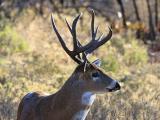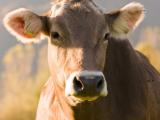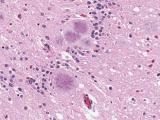May 1, 2006 (CIDRAP News) The US Department of Agriculture (USDA) is hunting for 14 cattle that might have shared feed with Canada's latest cow infected with bovine spongiform encephalopathy (BSE), or mad cow disease.
The agency announced Apr 28 that Canada had reported that 15 "feed cohorts"cattle that were exposed to the same feed as the infected cow when it was younghad been exported to the United States. The announcement raised the possibility of more BSE cases, since cattle are believed to contract the disease from contaminated feed.
One of the imported cattle had already been found in Washington state and was to be killed and tested for BSE, John Clifford, USDA's chief veterinary officer, said in a statement. "The disposition of the remaining 14 animals is still being determined," Clifford said.
He and Canadian officials said it is highly unusual to find more than one BSE-infected animal in a herd. "However, we will continue to work with Canada to locate as many animals of interest in this case as possible," Clifford said.
The Canadian Food Inspection Agency (CFIA) announced Apr 28 it had found 23 live cattle that potentially had been exposed to the same feed that the infected cow ate early in its life. "To date, a number of animals from this group are known to have been exported to the United States," the agency said.
The BSE caseCanada's fifthoccurred in a 6-year-old dairy cow in British Columbia. In reporting the case Apr 16, Canadian officials said the cow had been kept out of the human food and animal feed supplies. The cow was born after Canada banned putting protein from cattle and other ruminant animals into cattle feed in 1997.
The CFIA said exported cattle also were identified in investigations of previous BSE cases in 2003 and 2005.
The CFIA found the infected cow's 2004 calf, which had been slaughtered, according to an Apr 28 Reuters report. The agency was still looking for the cow's 2005 calf, the story said.
The United States stopped importing live Canadian cattle after Canada's first BSE case was found in May 2003. The border was reopened in 2005 to cattle younger than 30 months old.
The report on the exported cattle came the same day the USDA released an estimate that the United States may have between four and seven more BSE cases. Three cases have been found so far, one in a Canadian-born cow and two in native-born cattle.
See also:
USDA statement on BSE investigation
http://www.aphis.usda.gov/newsroom/content/2006/04/bsecan.shtml
















